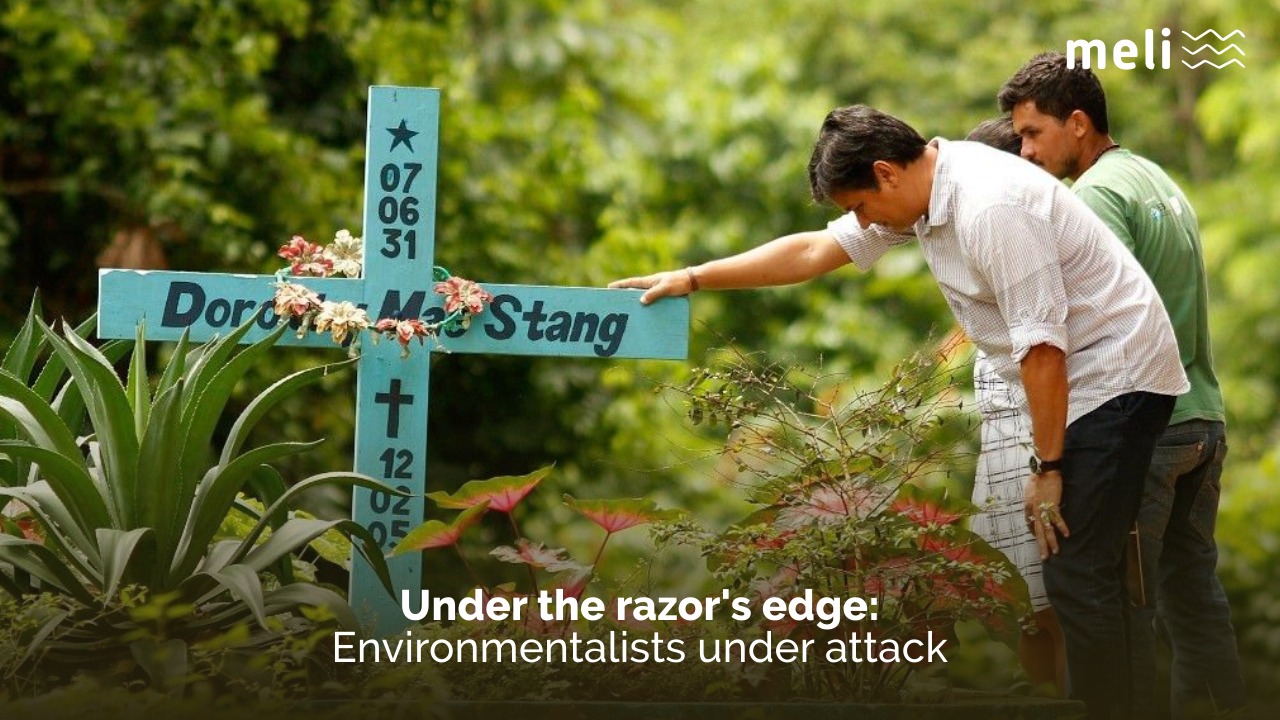A brief historical context and account of the current situation regarding violence in the Amazon Region.
Author: Gabriel Costa
Leia em Português. Auf Deutsch lesen.
::
A bit of historical context
The year was 2005. There was widespread optimism in Brazil, and for good reason. We were going through an unprecedented period of political and economic stability, with one of the first democratic transitions with universal suffrage after the dark 21 years of military dictatorship (1964-1985) and the troubled first 15 years of the New Republic (the period spanning from the so-called New Citizens’ Constitution in 1988 to the election of extreme right-wing leader Jair Bolsonaro in 2018).
There was widespread optimism in Brazil, and for good reason.
Brazil was experiencing economic growth, and a series of anti-poverty policies, implemented since re-democratisation, expanded by the left-wing government of then President “Lula”, were beginning to have an effect by reducing historical inequalities. Social movements were gaining ground, and among the most important goals was agrarian reform.
At that moment of great optimism, a kind lady, Sister Dorothy, Dorothy Mae Stang’s religious name (whose seventeen-year anniversary of assassination was covered here), was helping to conduct educational and environmental protection projects in the small Vila de Sapucaia, in Anupú, a Pará municipality crossed by the Trans-Amazonian Highway. Another undertaking in her long trajectory of struggles in the Amazon which go back to the distant 1970s.
However, the work of the nun, which blended political emancipation, education, and sustainability, and which would become a model for “sustainable settlements”, bothered the region’s landowners and grabbers. The tyranny of cattle and soybeans would claim another victim: at a crossroads 53 km from the municipal capital, on a February morning, the American nun was murdered. The perpetrator’s punishment only came in 2019, after 14 years of impunity.
The work of the nun, […] blended political emancipation, education, and sustainability
The tyranny challenged by Dorothy is heir to the previous violences that have left their mark on the occupation of Amazonian territory. In a historical process, the tyranny of the Amazonian aristocracy of the 19th and early 20th centuries, which ruled with an iron fist over the vast nut groves, rubber plantations, and ranches using debt slavery as a tool, was replaced by the state terror of the military dictatorship in the 1960s and later on by the tyranny of cattle and soybean that continues to advance to this day through land grabbing over the forest and the Amazonian population.
::
Nothing new under the equatorial sun
Little has changed in these last 17 years. The murders of environmental activists, journalists, and public advocates have been commonplace around here. Some of the most infamous cases were the murder of José Cláudio Ribeiro and Maria do Espírito Santo, residents of Nova Ipixuna, in Pará (2011); the massacre of 10 squatters in Pau d’arco, Pará (2017); the murder of Indigenous leader Paulinho Guajajara, in the Arariboia Indigenous Territory in the state of Maranhão (2019) (covered here as well).
Little has changed in these last 17 years.
In fact, the year 2021 was one of the most violent in the recent history of the Brazilian Amazon, as stated in the latest partial report of the Pastoral Land Commission (CPT), an organ linked to the Catholic Church that monitors situations of violence in the countryside and human rights violations. According to the text, 26 people were killed because of conflicts in the countryside between the months of January and August 2021, most of them (17) were Indigenous, quilombolas, and landless workers. It is worth noting that the highest number of murders (9) took place in the state of Maranhão, which is home to a part of the new agricultural frontier of Brazilian agribusiness, the cerrado region between the states of Maranhão, Piauí, Tocantins, and Bahia (MATOPIBA).
In addition to assassinations, the report also includes deaths related to agrarian conflicts, which totalled 103 in the same period. Frighteningly, 101 of these deaths were of Indigenous Yanomami people and according to the leaders of the Yanomami themselves, 45 of these deaths were of children. This ethnic group, its neighbouring peoples, and isolated Indigenous peoples in their territory, the Raposa Serra do Sol Indigenous Territory in Roraima, are under real threat of genocide caused by a “gold rush” led by thousands of miners who invade the area with the connivance of the Brazilian state.
The other forms of violence against local populations such as arbitrary arrests, intimidation, humiliation, attacks by gunfire, land grabbing, destruction of possessions, houses, and plantations have grown exponentially, and around 418 territories are currently in a situation of conflict. Of these, the majority (52%) are indigenous and quilombola lands. These people, together with small producers, are the most affected by the dismantling of public policies by the current right-wing government.
:
The extermination of environmentalists
The legal Amazon is where most of the human rights violations and murders are concentrated. And most of these conflicts arise from the asymmetrical relationship between the advance of predatory capitalism in the form of agribusiness and the resistance of local populations in the form of the “ecology of the poor”. This term refers to the different struggles for rights which have emerged in the countries of the Global South and have the livelihood of traditional populations, environmental protection, and social justice as fundamental principles.
The legal Amazon is where most of the human rights violations and murders are concentrated.
Many of the dead activists, even if they did not use this term, belonged to this political strand, since their struggles combined the protection of people, social justice, and the environment. For this reason, they were rightly considered an obstacle to the “development” of agribusiness, which seeks to concentrate income and land, with its main frontier in the Amazon.
Activism challenging the tyranny of cattle and bullets is punishable by death, despite the absence of capital punishment in Brazil. Above all, the Amazon region is steeped in a culture of illegality or the lack of adherence to national laws, which favours the impunity of the perpetrators and instigators of murder. All these processes have been exacerbated in the last three years, coinciding with the support provided by the federal government to land grabbers, miners, and environmental offenders.
:
A possible future
Despite the history and the current violent state in the region, another future is possible. A new future, the same future that was dreamt by Dorothy Stang and so many other environmentalists who died for those dreams, of the Amazon as a place of peace. We need to fight for the law to be enforced through organisations like Meli, political parties, social movements, and state policies. We also need to fight to overcome this model of irrational exploitation, injuring agribusiness, encouraging production on small properties, agro-forestry, and the protection of humans and land.
Despite the history and the current violent state in the region, another future is possible.
Your donation can have a positive impact on the world!
Subscribe to receive our Newsletter!
Find us also at Linkedin, Facebook, Twitter or Instagram
www.meli-bees.org
❤️
Titelimage: “De olho nós ruralistas“ by Priscilla Arroyio, edited by Ícaro Uther


2 Replies to “Under the razor’s edge: Environmentalists under attack ”